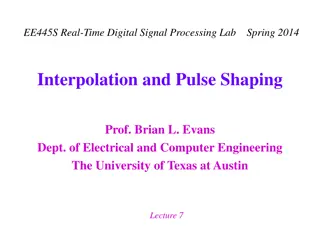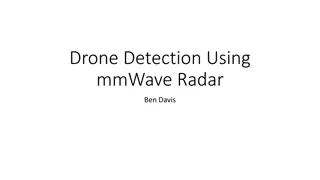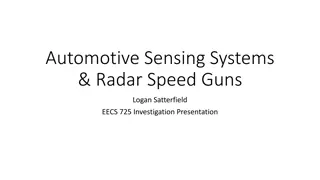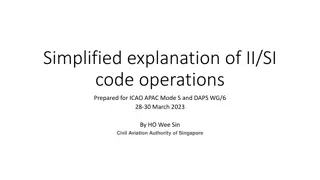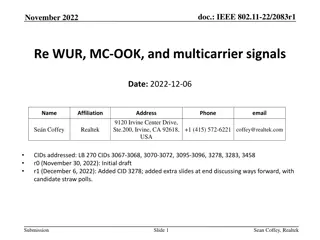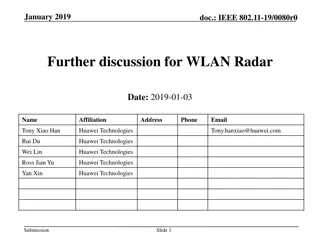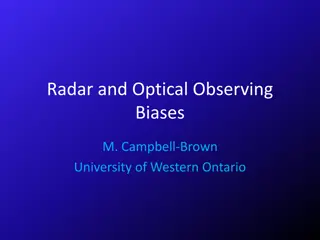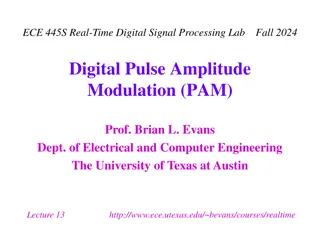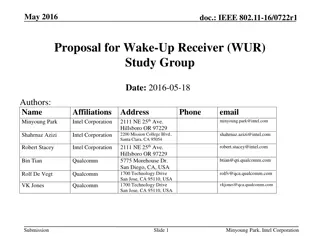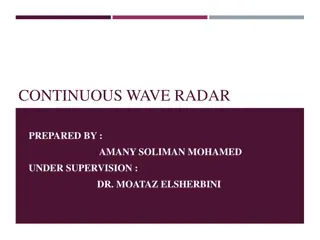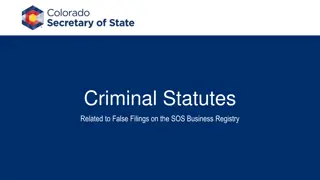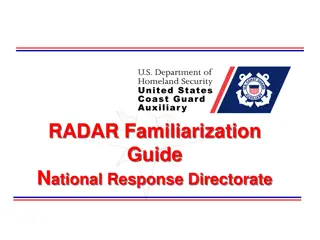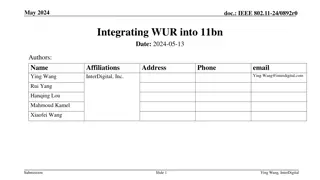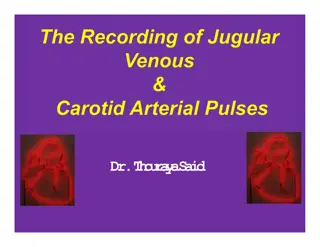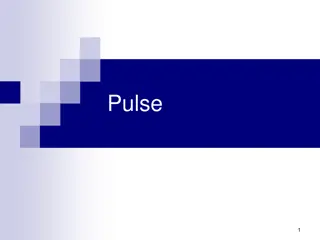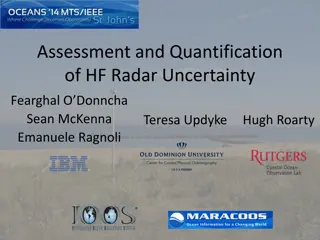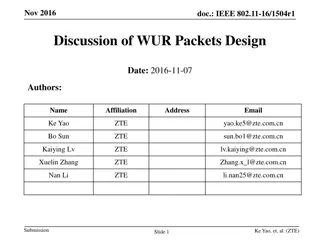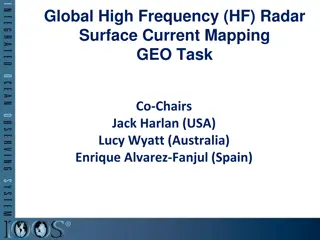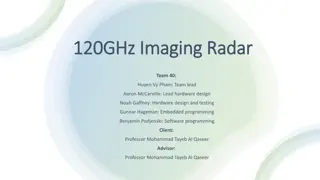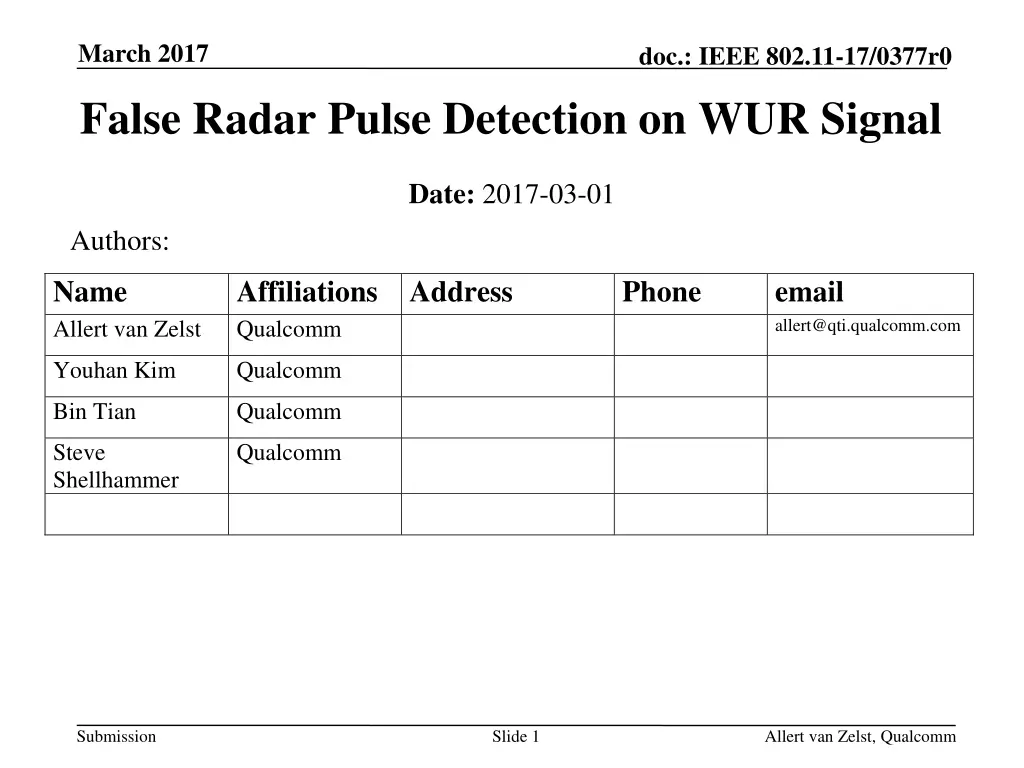
Radar Pulse Detection on WUR Signal
"Explore the challenges in radar pulse detection on WLAN systems using WUR signals with a focus on false detection performance crucial for industry compliance and spectrum efficiency. Learn about distinguishing characteristics between WLAN signals and radars, modulation schemes, and simulation setups in this informative IEEE document from March 2017."
Download Presentation

Please find below an Image/Link to download the presentation.
The content on the website is provided AS IS for your information and personal use only. It may not be sold, licensed, or shared on other websites without obtaining consent from the author. If you encounter any issues during the download, it is possible that the publisher has removed the file from their server.
You are allowed to download the files provided on this website for personal or commercial use, subject to the condition that they are used lawfully. All files are the property of their respective owners.
The content on the website is provided AS IS for your information and personal use only. It may not be sold, licensed, or shared on other websites without obtaining consent from the author.
E N D
Presentation Transcript
March 2017 doc.: IEEE 802.11-17/0377r0 False Radar Pulse Detection on WUR Signal Date: 2017-03-01 Authors: Name Allert van Zelst Affiliations Address Qualcomm Phone email allert@qti.qualcomm.com Youhan Kim Qualcomm Bin Tian Qualcomm Steve Shellhammer Qualcomm Submission Slide 1 Allert van Zelst, Qualcomm
March 2017 doc.: IEEE 802.11-17/0377r0 Overview WLAN system is not the primary user of the DFS channels WLAN systems are required by law to vacate the channel for 30 minutes upon detecting radar signals While radar detection performance is important to abide by the law, false detection performance is also crucial for the WLAN industry Spectrum is a valuable resource WLAN industry need to be able to demonstrate to Regulators that the industry can make efficient use of the DFS channels so that more spectrum may be made available WLAN systems often vacating DFS channels due to false alarm will not motivate Regulatory bodies to assign more DFS channels to WLAN Submission Slide 2 Allert van Zelst, Qualcomm
March 2017 doc.: IEEE 802.11-17/0377r0 Challenges in Radar Detection Radars have very wide range of characteristics , making their detection challenging Difficult to set the pattern matching criteria very tight in practice Some regulatory bodies are considering to increase the range of radar patterns, making reliance on pattern matching alone to be even harder E.g., the Japan Meteorological Agency (JMA) was considering radar pulses with 500 usec duration, thus filtering pulses out based on pulse duration would become quite difficult One key distinction between WLAN signals and radars has been the BW of the signal WLAN signals in 5 GHz (11a/n/ac) have been at least 20 MHz wide Radar signal is a tone Chirping radars have time varying tone frequency. But at a given time, chirping radars are also narrow band signals. This distinction can greatly reduce the probability of declaring a (potential) radar pulse for a WLAN signal Submission Slide 3 Allert van Zelst, Qualcomm
March 2017 doc.: IEEE 802.11-17/0377r0 WUR Signal OOK is being considered as the modulation scheme for WUR OOK signal has many rising/falling edges similar to radar pulses For power efficiency and adjacent channel rejection performance consideration, WUR signal BW is most likely narrower than 20 MHz E.g. a 4 MHz BW has been proposed In this presentation we examine the DFS channel false radar pulse detection performance of some legacy devices with respect to an example WUR signal Submission Slide 4 Allert van Zelst, Qualcomm
March 2017 doc.: IEEE 802.11-17/0377r0 Simulation Setup 1x1 80 MHz channel bandwidth Primary20 on second subchannel from the left WUR signal from OBSS on third subchannel from left WUR signal: has a 20 MHz 11a preamble with L-SIG rate at 6 Mbps and a length spoofing equivalent to 1 ms has a 1 ms On-Off Keying (OOK) payload with a bandwidth of 4 MHz, and 8 us symbols with a 4 us On and 4 us Off period or vice versa WUR signal is received at -60 dBm Radar detection enabled Submission Slide 5 Allert van Zelst, Qualcomm
March 2017 doc.: IEEE 802.11-17/0377r0 WUR Signal Zoomed in at first 125 s Submission Slide 6 Allert van Zelst, Qualcomm
March 2017 doc.: IEEE 802.11-17/0377r0 Simulation Results In AWGN we see 94% false radar pulse detects In D-NLOS we see 100% false radar pulse detects From experience we can say that such high false pulse detect rates sooner or later result in false pattern recognitions, leading to false radar detects Any false radar detect will force the WLAN network to vacate the DFS channel for 30 minutes Submission Slide 7 Allert van Zelst, Qualcomm
March 2017 doc.: IEEE 802.11-17/0377r0 Problem + Potential Solution Since the WUR signal is received on a secondary20 subchannel, the issue is that the L-SIG is not demodulated, an thus its length field is not honored, while the WUR OOK is rather narrowband and has many rising edges, which easily triggers the radar detector Potential solution Limit the operation of WUR to non-DFS channel 2.4 GHz band has better range Client with WUR receiver is also relieved from the burden of potential frequent channel switching due to DFS master s radar detection outcome Submission Slide 8 Allert van Zelst, Qualcomm


